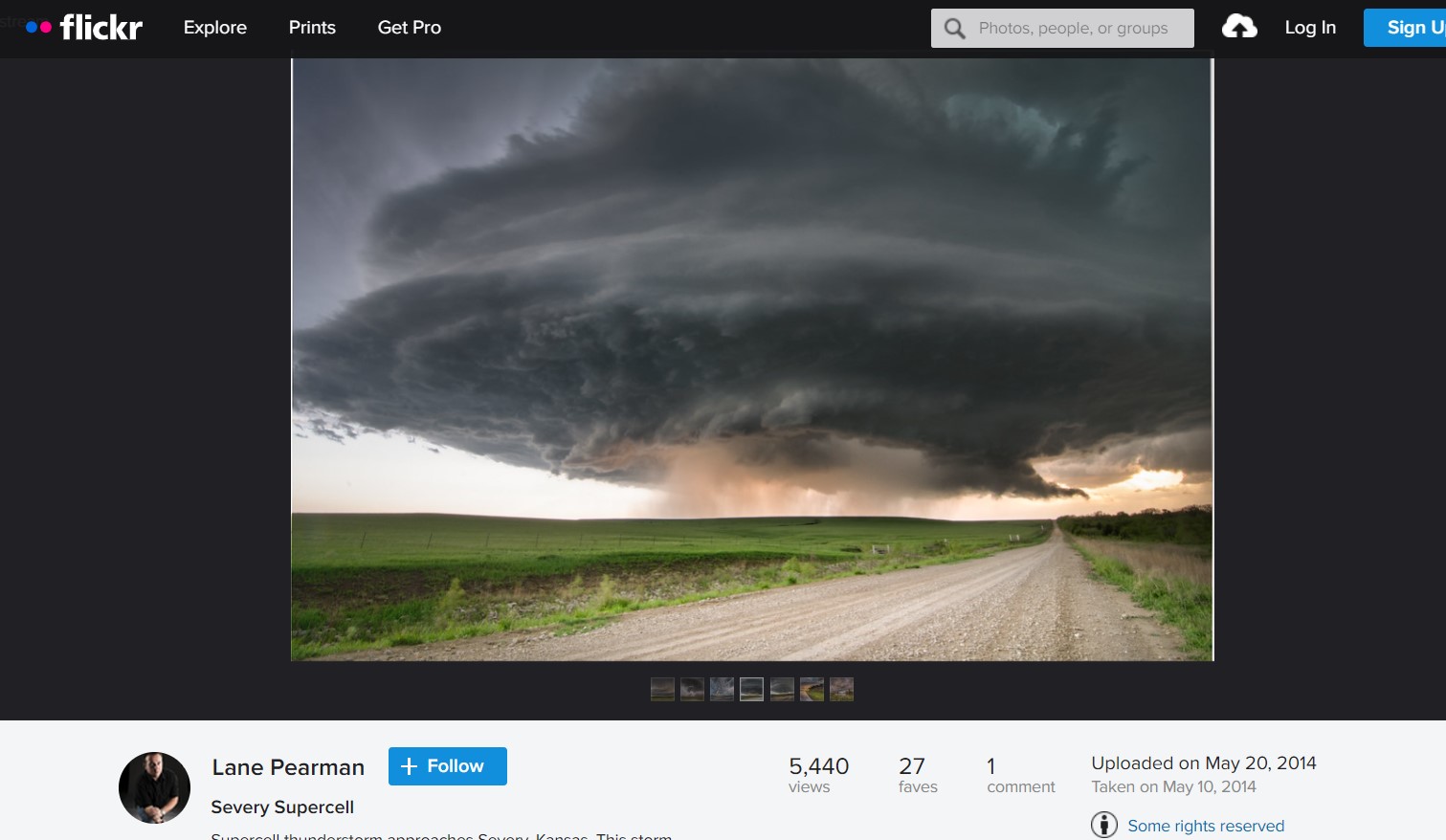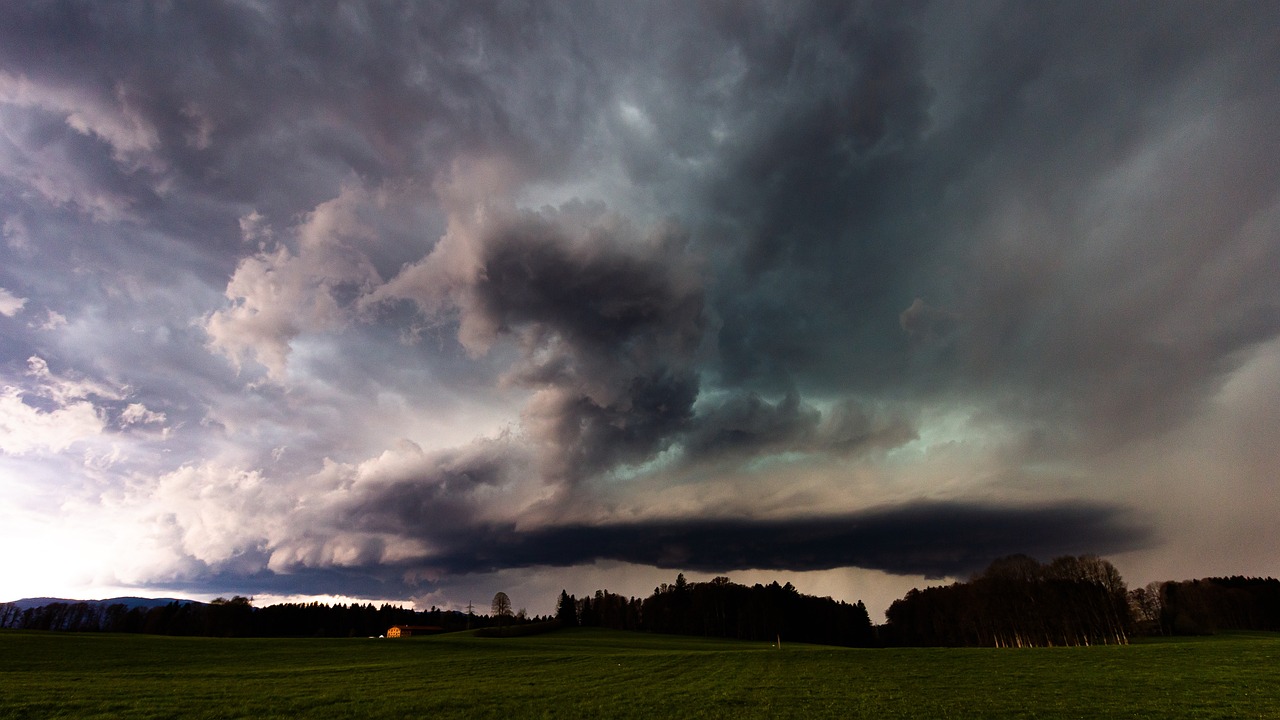Original article (in Serbian) was published on 21/07/2023; Authors: Milica Ljubičić, Marija Vučić
The storm that passed through the region on Wednesday evening scared people with its destructive power, but also fascinated them since it is an unusual and dramatic natural phenomenon. Photos and videos of the cloud that darkened the sky at high speed immediately appeared on social networks. Fascinating scenes from Serbia were not enough for some, so they downloaded stock photos of supercell clouds formed in the USA, claiming that it is Serbia. This was, for example, the case with the conspiracy theorist Sladjana Velkov, whose post with fake photos on Facebook was shared almost 300 times – without any evidence, she claims that the storm was artificially caused. “Everyone who thinks so should enrol in meteorology studies and familiarize themselves with the physics of the atmosphere”, says Slobodan Sovilj from the Republic Hydrometeorological Institute.
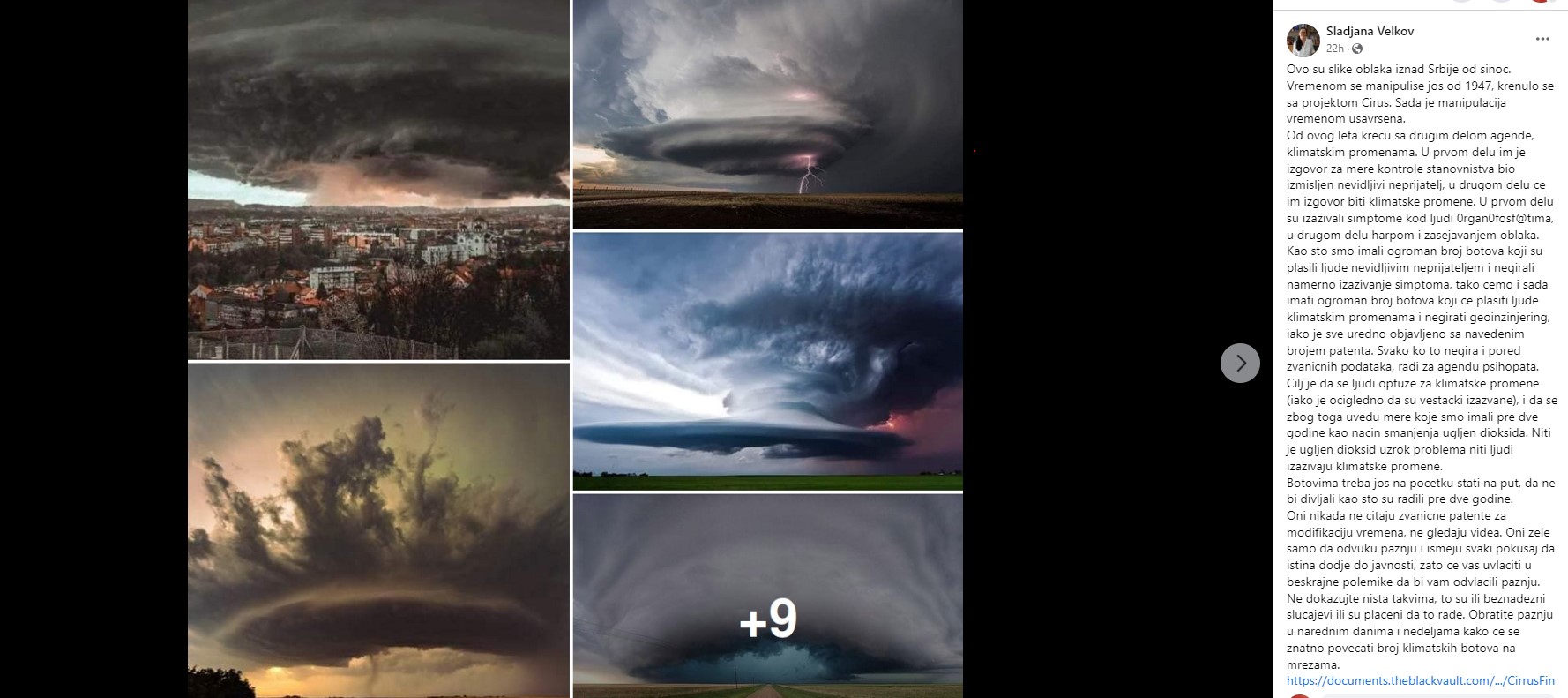
“These are pictures of the clouds over Serbia from last night”, Velkov wrote in the first incorrect sentence of the post, in which, until the end, she will present more incorrect claims. Her main thesis is that certain power structures caused climate change by manipulating the weather, in order to eventually “introduce the measures we had two years ago as a way to reduce carbon dioxide”. This post brought her more than 700 likes and almost 300 shares, and she shared the same post on her Telegram channel.
We found similar claims on some other accounts on Facebook and Viber groups.
However, they do not make any sense. Slobodan Sovilj, head of the National Center for Hydrometeorological System, Early Announcements and Warnings at RHMZ, explained that a storm like the one on Wednesday cannot be caused by man.
“All those who believe that such phenomena can be caused by humans should enrol in four-year meteorology studies, familiarize themselves with the meaning of atmospheric physics, which processes produce precipitation, which processes condition the formation of clouds and how much complexity there is in this whole area”, he says.
Man can influence the weather, explains Sovilj, but only on a small scale, that is, locally – for example, when we use anti-hail protection to reduce hail that will fall to the ground.
A storm like the one that hit the region on Wednesday required a set of conditions that cannot be influenced by humans. Then, according to this expert, a “line thunderstorm structure” was formed.
“It is a structure that develops when the atmosphere is extremely unstable and in situations where the wind at a height of five to 10 kilometres in the atmosphere is strong enough to support their formation”.
Statistically speaking, this kind of phenomenon is more common in Western and Central Europe, while it is relatively rare in our country – Sovilj says that we haven’t had such a case in the last ten years. However, such clouds can develop anywhere, if the conditions are created for them.
“There is no geographical location where such a disaster cannot develop, if several factors coincide at the same time – extreme instability of the atmosphere, favourable temperature, humidity and wind, and then such a system develops”.
Are climate changes the cause of this storm? Sovilj says that they are not, that is, that they cannot start or cause such disasters, but that they can change their intensity.
“Today we live on a warmer planet: summers in Serbia are on average 2.6 degrees warmer than in the fifties or sixties of the last century. If the atmosphere is a degree warmer, it can contain six to seven percent more water vapour. (…) Warmer air that contains more water vapour can increase the intensity of such systems, although it cannot be responsible for their formation. The wind field in the atmosphere is crucial for its formation and maintenance.
Using fake photos to get likes
The specific photos that can be seen in Sladjana Velkov’s post, as well as on other accounts on social networks, were neither taken in Serbia nor taken these days. They were downloaded from AP, Getty Images and similar websites, and they were all photographed before July 19 of this year.
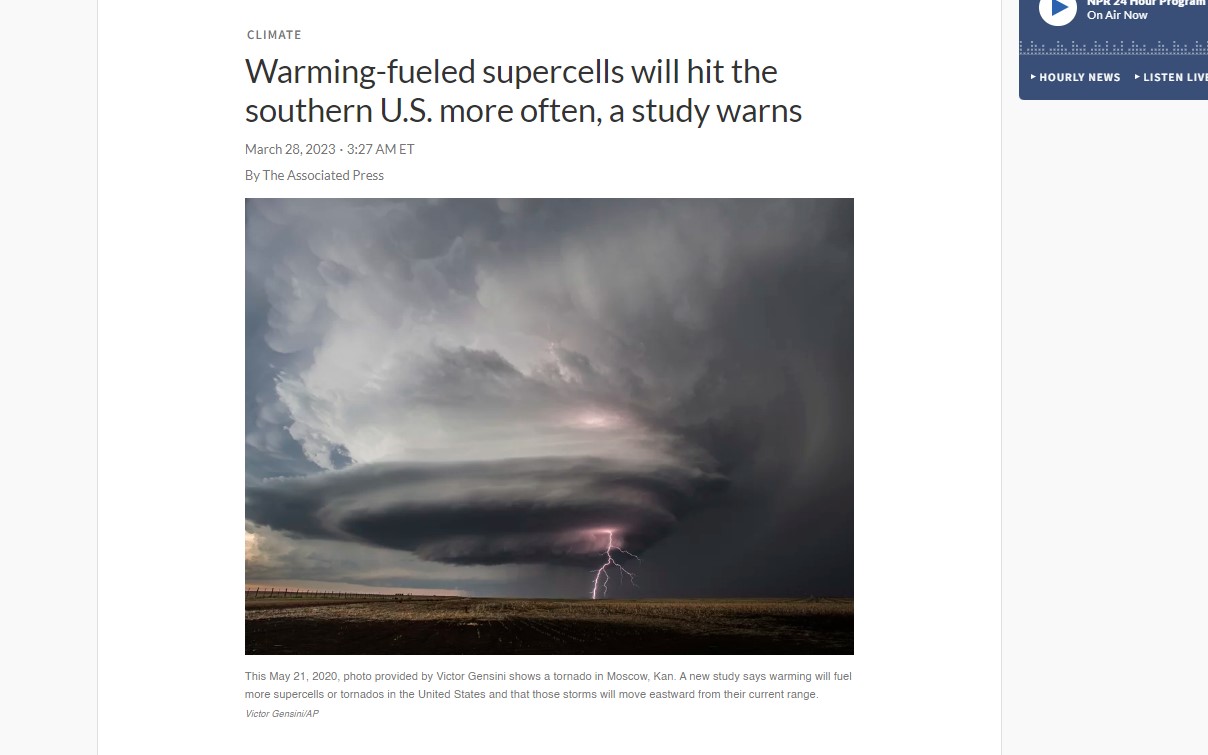

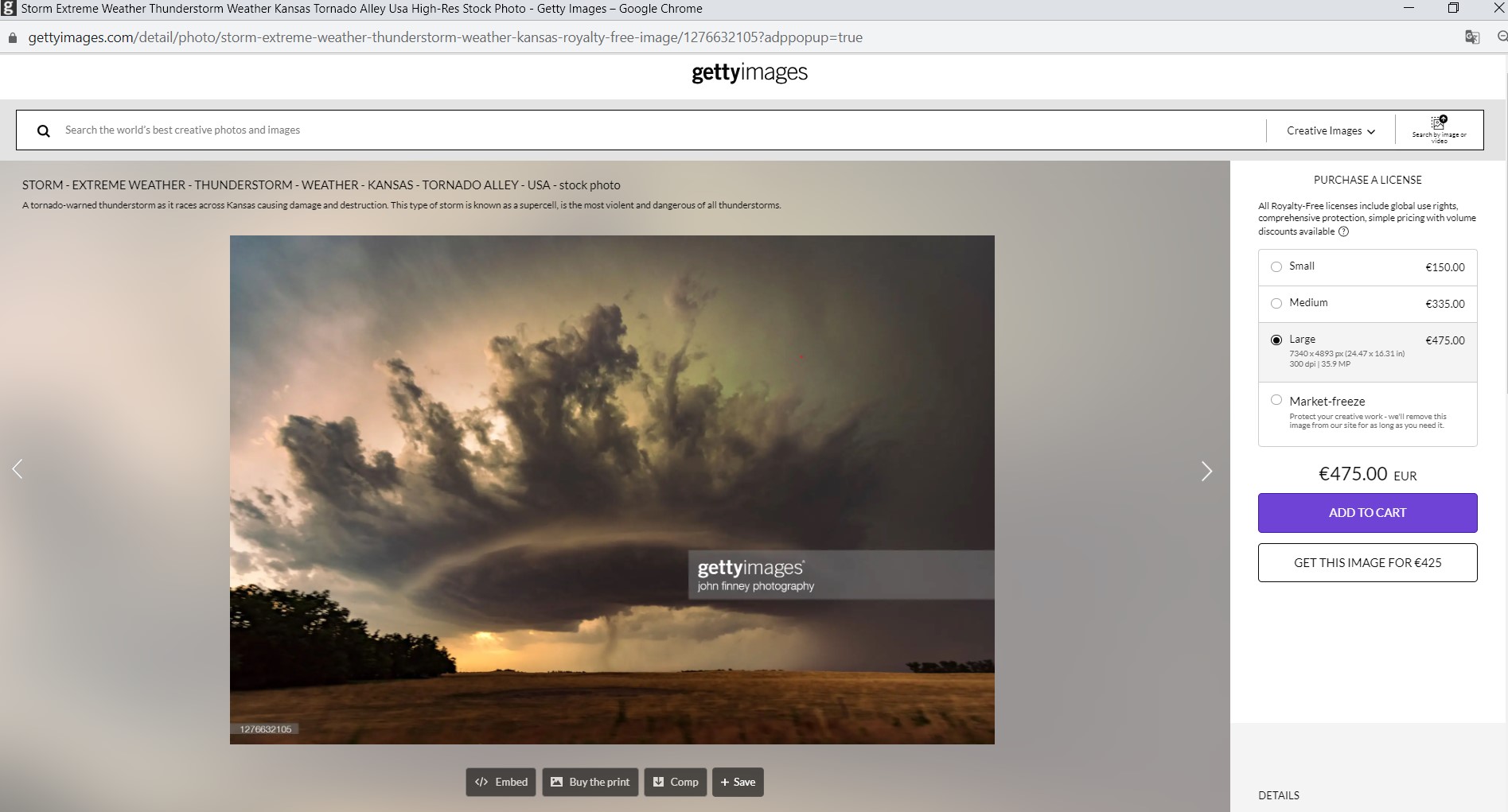

When it comes to the first photo from Sladjana Velkov’s post, it was shared on July 19 on Twitter, with the claim that it was taken in Valjevo, where it became viral, and from there it “spill over” to other accounts and networks such as Tik Tok.
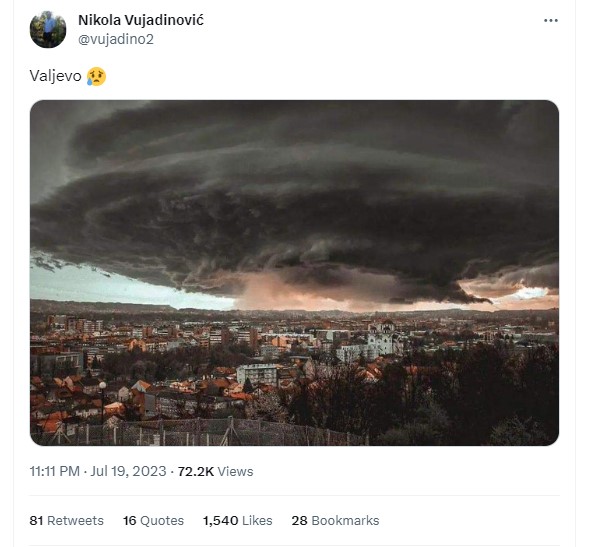
However, it is a photomontage – a cloud was added to the panorama of the city from a photo that, among other things, can be found on the Flickr site, where it was posted nine years ago, and filters have been used to achieve an additional dramatic effect compared to the original cloud. The Twitter user who shared this photo did not delete it even after other users of this network drew attention to the fact that it was a manipulation.
